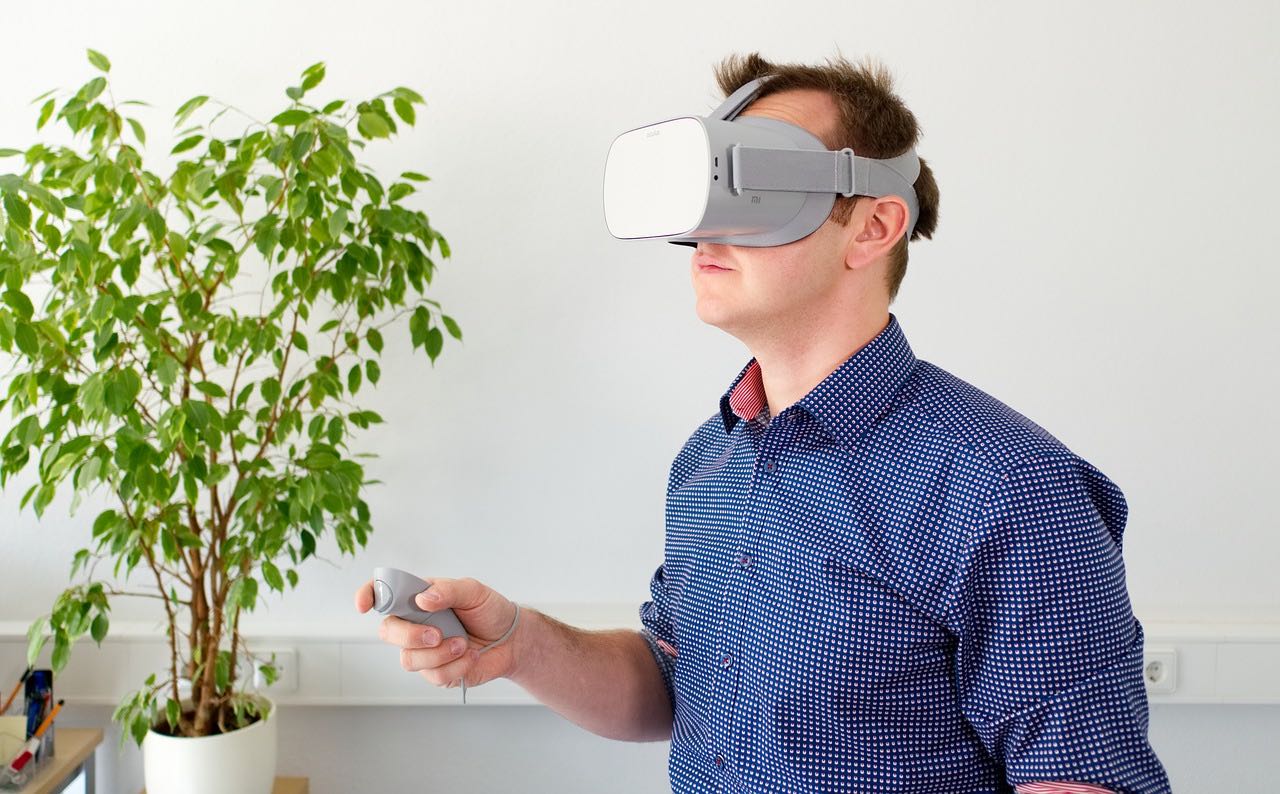Businesses cannot grow and evolve unless its employees grow and evolve with it, learn new and important skills and gradually refine the way they work.
Until recently, companies used to rely on face-to-face employee training. Classroom learning, online slides, and PowerPoint presentations have dominated management training for decades.
Unfortunately, these techniques simply don’t work with modern-day learners as they did with previous generations and some on-job scenarios can hardly be recreated realistically in training.
A surgeon, for example, could read all the books in the world, but nothing can prepare him for, or compare to the experience of actually performing the surgery.
Taking a hands-on approach is perhaps the most effective way of learning, but some scenarios simply cannot be used in real-life training without having adverse effects or potentially risking life-threatening mistakes.
Not to mention that we all learn in different ways and at different paces. Which begs the question, how can one replicate the experience of, say, performing a surgery without all the added risk?
It turns out that virtual reality (or VR for short) has far greater value for enterprises than previously thought.
Re-imagining the way businesses approach employee training and relying more on latest technologies such as the cloud, augmented and virtual reality has turned out to be one of the best ways to address these hard-pressing issues.
And virtual reality has been infiltrating the corporate world for some time now, with research suggesting that the use of VR in business and corporate industries will surpass the use in leisure markets by 2021.
What is virtual reality?
According to Wikipedia, virtual reality refers to technologies that rely on software in order to create realistic images, sounds, and sensations that closely replicate real environments and simulate the physical presence of users in said environments.
Whereas artificial reality superimposes virtual objects on top of the real world, virtual reality imposes real-life users inside virtual worlds.
This prospect of virtually creating any type of environment of situation you can imagine at a relatively low cost is exactly what makes virtual reality appalling to business and corporate worlds.
What types of VR are there?
Virtual reality has been around for some time now, namely in the form of flight simulators used to train pilots. However, these training methods were robust and quite costly for large-scale implementation.
It’s the advancement in portable VR systems and the use of headsets that really launched the idea of virtual reality into the mainstream.
Currently, there are two types of VR hardware solutions commercially available: smartphone-dependent VR and dedicated VR equipment that includes headsets, gloves, controllers, etc.
Content used in these solutions can either be a 2D photosphere, more commonly referred to as 360-degree videos and fully modeled 3D environments.
While smartphone-dependent VR is a lot more convenient for everyday use and relatively cheap, the engagement it offers is oftentimes limited.
On the other hand, dedicated VR solutions might cost more, but they offer a much greater degree of engagement and a far more immersive experience.

Why VR?
The use of VR for training coincides with the 70/20/10 learning model which states that only 10% of what we know about our jobs is learned through formal training, 20% through our work-relationships and 70% come from informal, everyday experience.
This learning approach was established by the Center for Creative Leadership and has gained a lot of support from the US Bureau of Labor Statistics.
Until recently, more than 80% of all learning experiences were led by instructors and offered in a structured, even formal setting, as opposed to the 10% suggested by the bureau.
From a business perspective, learning needs to be cost-effective, employee-driven and efficient and using VR to train employees becomes a no-brainer.
The beginnings of immersive training
In 2013, the gas and oil extraction industry had a fatality rate of 3.2 deaths for every 100,000 workers. By comparison, the fatality rate in any other industry in the US was eight times lower.
Up until then, the oil companies were heavily reliant on PowerPoint presentations as means of emphasizing on-site safety, which did very little to prepare the workers for the harsh and hazardous environment of an off-shore oil-drilling platform.
This is why companies such as Frank’s International, one of the industry leaders in casing, distributing and installing oilfield tubulars joined forces with the Louisiana Immersive Technologies Enterprise (LITE) in order to create a teachable VR simulation of the dangerous situations one might witness on these oil rigs.
As it happened, using virtual reality to train employees turned out to be a big success. It allowed for a hands-on approach to learning and sparked genuine interest and engagement across the classroom.
Soon, other companies started following suit and today, we have giants such as Texas BP routinely using VR to ensure their contractors learn how to perform work safely in specific, high-risk conditions during drilling operations.
VR training is actively helping the company drill more efficiently and the scenario-based, hands-on approach has resulted in increased safety during real-world operations by providing different drilling teams the opportunity to practice joint procedures as a single, integrated unit.
Total, the French gas and oil magnate has used ITS or Immersive Training Simulators to maximize the production of raw materials, but also increase the overall safety in the real-world conditions.
Trainees are sent through an immersive 3D replica or the real environment in order to help them prepare for emergency situations and visualize different tasks that need to be accomplished on the spot.
San Francisco-based Bechtel and Hong Kong-based Gammon Construction Ltd are also using VR for employee training.
Bechtel has joined forces with a wearable tech company named Human Condition Safety to create engaging and immersive environments to train its workforce, prevent injuries, improve on-site safety and make their training more interesting and enjoyable for the construction workers.
The company has created a number of training modules, with two new ones being launched roughly every three months.
These modules include forklift training, hazard identification, ironworker training and scaffold training.
Ironworker training, in particular, allows workers to acclimate to their new working environments before actually setting foot on-site and avoid becoming overwhelmed by height the moment they find themselves on a very high beam.
Forklift training is now more akin to a test course with hazards that include someone walking up in front of the forklift, something that would normally be avoided in real-life training due to high risk of an accident occurring or simulated with a dummy, that in workers minds simply doesn’t resonate as a real human being.
VR in the medical field
It wasn’t long before hospitals started implementing VR to guide and train practitioners in various procedures, including cardiopulmonary resuscitation, catheter insertion, and wound care.
It allowed for trainees to immerse themselves in risky environments and synthesize an experience that was not only realistic but also memorable.
In 2016, the Royal London Hospital had one of their cancer surgeons broadcast a live operation in virtual reality. Those who tuned into the operation could not only zoom in and out to get a clearer picture, but they could also walk through the operating theater and watch the operation using different angles.
Shauna Heller, a former member of the original Oculus team has left the company in order to become a consultant for non-VR applications. She simply wasn’t as passionate about video games, yet fully realized the implications virtual reality could have on employee training.
She joined hands with top video design agencies and VR developers and surgeons from the Children’s Hospital in Los Angeles in order to make a viable simulation to help pediatricians train how to save infants with anaphylactic shock or suffering from seizures.

VR in other industries
Walmart has invested in VR technologies in order to train their employees for emergency situations that are normally very difficult to recreate in real life, but also to prepare them for the seasonal chaos we all know as Black Friday.
Using VR simulations, employees had the opportunity to witness both sides of the proverbial coin, or in this case, the hectic shopping experience.
One was from the perspective of a worker, while the other was from a perspective of a shopper looking for a particular product, seeking help or even getting trampled in the commotion surrounding Black Friday sales.
Instead of simply telling their employees how hectic it can be and hoping for the best, the company made sure they are fully prepared and know exactly how to handle such as stressful situation.
According to Stivr, the company in charge of developing the training software deployed by Walmart, the retention rates using virtual reality are around 75%, which is a stark contrast to the 10% normally reached using lectures and presentations.
Walmart will reportedly expand their VR training practices to all 200 employee-training centers and make it into an integral part of their employee training.
UPS has also started training their student drivers in delivery, as well as spotting and identifying potential road hazards.
The company has created training modules that allow users to hear and see inside headsets such as HTC Vive and integrated VR-enabled training into nine of their training facilities.
Driving students would verbally identify road hazards including oncoming traffic, pedestrians and even parked cars, all while being completely immersed in a realistic driving simulation.
If a student driver would see a ball bouncing across the street, they would slow down their vehicle to a complete stop and simply honk to let the likely children and pedestrians nearby that there is a truck on the road.
In VR training, however, students would verbally signal when and where there is a potential hazard and voice-recognition software would determine whether the answer is correct.
Even Google has experimented with VR training by having two groups pitted against each other in order to see who would make a better cup of coffee.
One would rely solely on training videos found on YouTube, while the other would use VR headsets to help in their training.
Although unsurprisingly, neither of the groups managed to make a decent cup of coffee, the one using VR headsets did manage to brew their cup of joe in less time with fewer mistakes.
The future of VR training
One of the main costs of VR training is the development of the training modules. Large companies might be inclined to invest in generic modules that can be used time and time again, instead of spending their budgets on product- and industry-specific modules that have a short shelf-life.
Creating the desired content, for now, is the number one limitation, as companies require content that is carefully designed yet highly interactive. Put simply, it’s far more expensive and difficult to produce than the average PowerPoint presentation.
If done correctly, virtual reality adds a level of realistic immersion and engagement far superior to any other previously used learning technique.
That said, this experience needs to be cost-effective and provide real value regarding employee training, otherwise, companies would end up with nothing more than an unnecessary, overpriced gimmick.
Another very important thing both companies who use VR to train their employees and the makers of VR training modules need to consider is the analysis and subsequent evaluation of the training simulations.
Companies want a scoring system that would adequately represent the amount of learning their employees accomplish and this type of assessment needs to be incorporated into the training modules themselves.
Virtual reality offers a wide range of applications, with employee training being on the forefront of enterprise-wide VR adoption.
The current iterations might still be plagued by clunky design, large price tags, and an oftentimes spotty user experience. This might throw some companies of the VR trail, but once we consider the ever-evolving nature of portable technologies and their inevitable drop in price point, it’s safe to say that VR-enabled learning experiences are not going away anytime soon.
About the Author:



